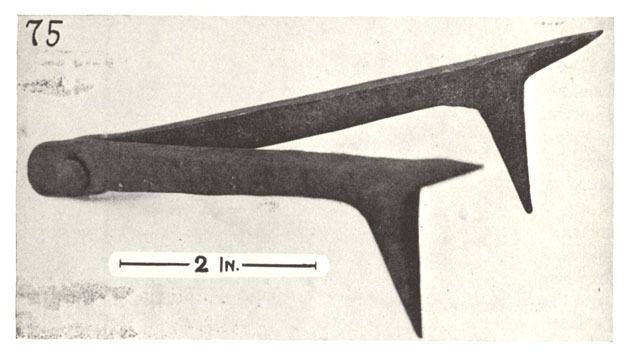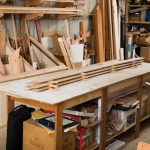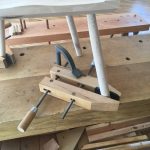We may receive a commission when you use our affiliate links. However, this does not impact our recommendations.
There isn’t enough written in English on the woodworking of the Chinese, who have a long and amazing woodworking and technological history. But today I’ve been gobbling up “China at Work” by Rudolf P. Hommel (MIT Press, 1937), which focuses on tools used for making other tools (blacksmithing), food, clothing, shelter and transportation.
Unlike other contemporary writers, Hommel lived in China for several years, had enormous respect for the culture and his aim was “to investigate and not criticize.”
His book covered Chinese material culture before the country became industrialized, and the book is simply fascinating.
Of course, I’ve been deep into the woodworking section of the book and there is lots to learn.
Throughout the book, Hommel features photos of the typical low Chinese workbenches used in many of the trades. And then he shows the photo above: Fig. 362. Carpenter’s Bench Stop. Of the stop he writes:
To hold a board in place when planing it, the carpenter uses an instrument like the one shown in Fig. 362. The two spikes pointing downward are driven into the bench or the top of a wooden horse. The board whose surface is to be planed is laid flat upon the work bench and its edge is pressed against the two end spikes of the stop. To plane the narrow edge of a board, the board is set upon edge, pushed between the two legs of this bench stop and thus held firmly in place. The length of the two parts, held together by an iron rivet, is 6-1/4 inches. The bench-stop was photographed in the Native City of Shanghai.
There are lots of Western planing stops that are driven into the benchtop, such as a planing knife. Yet I am not aware of any Western stop that works like this Chinese one. It’s quite clever.
Hommel’s book is, on the whole, quite interesting. And it was a difficult one for him to research. At the time he lived in China (1921-1926 and 1928-1930), the Chinese had an “innate aversion” to the camera. “This extended not only to photographing the people but also to their belongings.”
Add to that the fact the Chinese were also offended by Hommel’s ruler, his task was difficult.
“The taking of measurements with a footrule was almost as offensive to the Chinese as the taking of photographs.”
I still have a couple hundred pages to go with this book, but wow.
— Christopher Schwarz
Here are some supplies and tools we find essential in our everyday work around the shop. We may receive a commission from sales referred by our links; however, we have carefully selected these products for their usefulness and quality.











Chris,
I really liked this post about this design. I liked it so much I did some CAD work and whipped up some plans to have a blacksmith I know make me a copy. Are you interested in an extra copy? I will front the money if you promise to write a blog post about it.
Thanks,
Joshua T
P.S. Link to a render http://imgur.com/a/pY14p
Sigh… yet another interesting book ordered after reading one of your posts. I’m gonna needa bigger bookcase.
Thanks (I think).
Cool planing stop. I am always fascinated by the ingenuity of craftsmen. I lived in China for two years in the late 1980s so I just ordered the book at my library as the subject is interesting to me.
Looks a lot like a Stanley no. 202 PORTABLE BENCH DOG .
I hope you make a Chinese planing stop and video, it’s hard to get my head around this one. I’m also intrigued by the Chinese aversion to the tape measure. I worked hard to accept Norm Abram’s advice to avoid measuring as much as possible to increase accuracy (now I live by those words), but there are many times our way of thinking and working requires it. I wonder if the Chinese today still eschew metage?